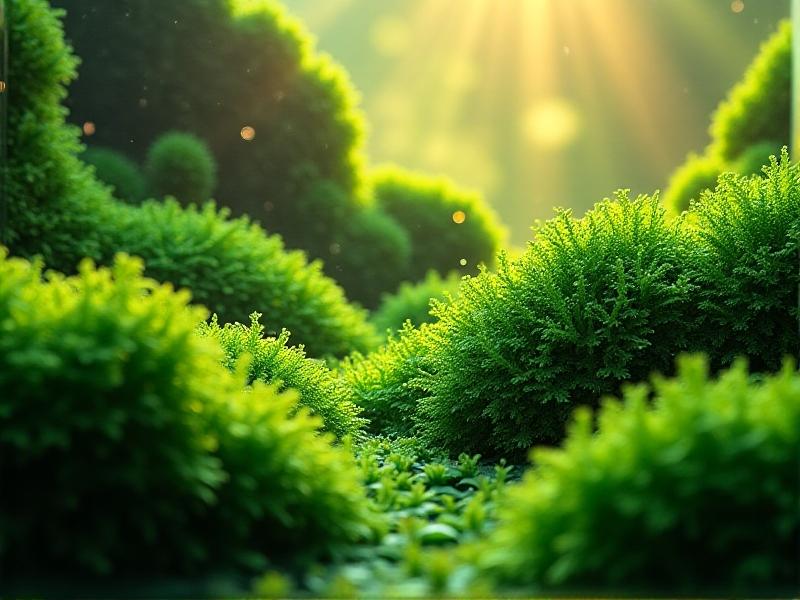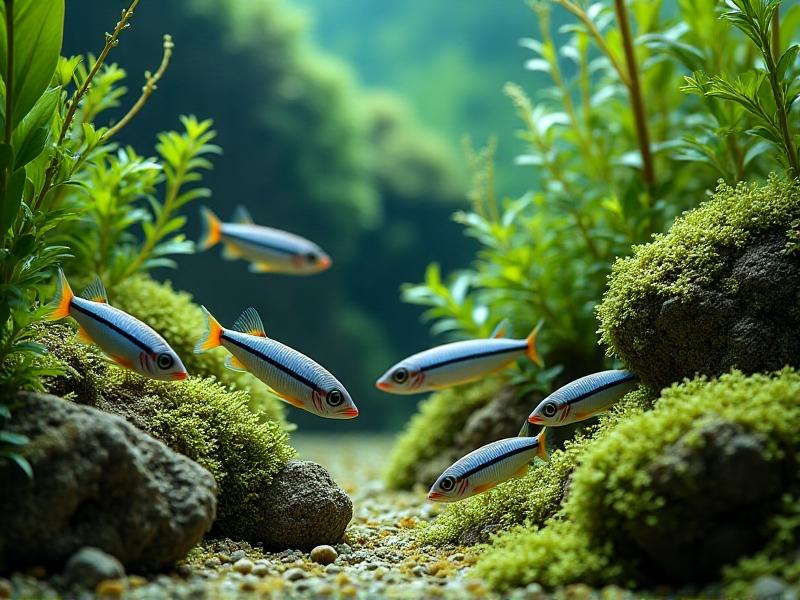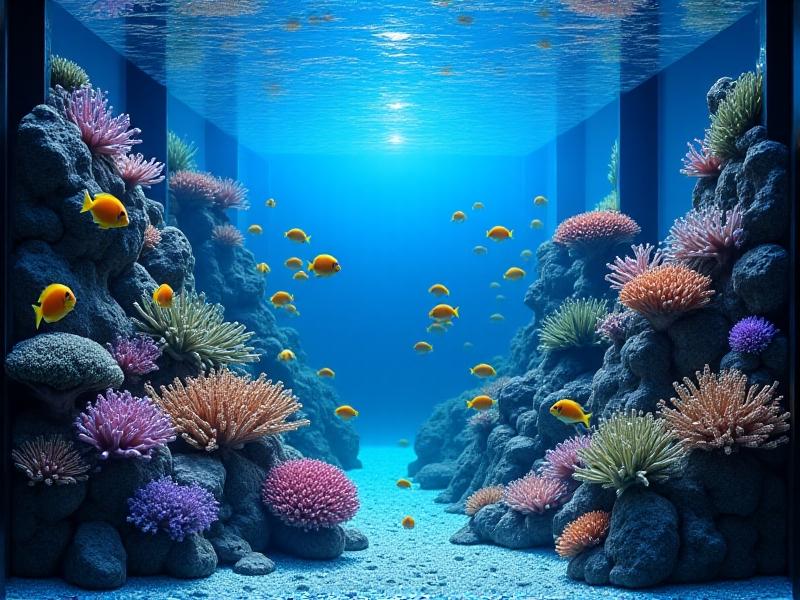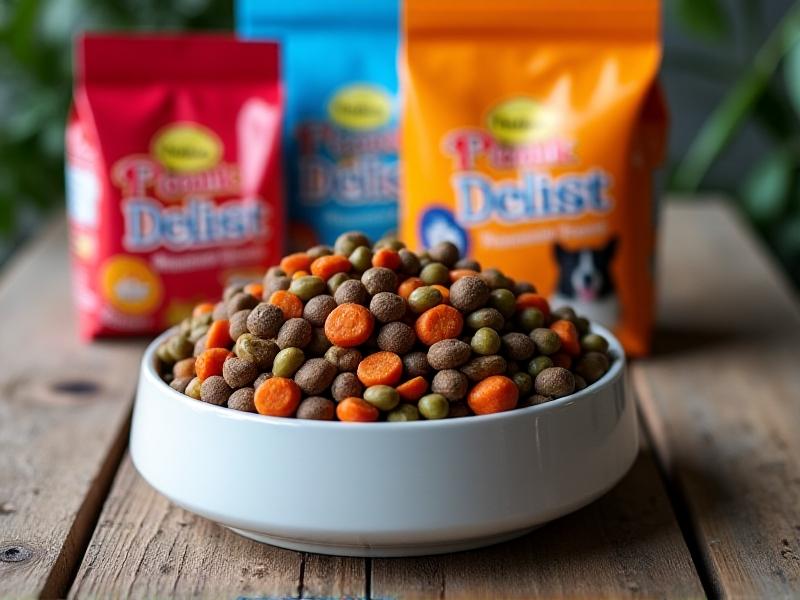Sustainable Algae Control: Natural Solutions for Clear Tank Water
Understanding Algae Growth in Aquariums
Algae growth in aquariums is a common issue that many fishkeepers face. While a small amount of algae can be beneficial, providing food for some fish and contributing to the tank's ecosystem, excessive growth can lead to cloudy water, blocked filters, and unhealthy living conditions for aquatic life. Algae thrive in environments with excess nutrients, such as nitrates and phosphates, which often result from overfeeding, inadequate filtration, or infrequent water changes.
Understanding the types of algae is crucial for effective control. Green algae, for instance, are the most common and often appear as a green film on tank surfaces. Brown algae, typically found in newer tanks, cling to glass and decorations. Blue-green algae, which are actually cyanobacteria, can form slimy layers and release toxins harmful to fish. By identifying the type of algae in your tank, you can tailor your approach to managing it sustainably.

The Role of Natural Predators in Algae Control
Introducing natural predators into your aquarium is an effective and eco-friendly way to manage algae. Certain fish, snails, and shrimp are known for their algae-eating habits and can help maintain a balanced ecosystem. For example, Siamese algae eaters are excellent at consuming hair algae, while nerite snails are adept at cleaning glass and decorations. Amano shrimp are another popular choice, as they consume a wide variety of algae types.
It’s important to choose species that are compatible with your existing tank inhabitants and to avoid overstocking, which can lead to other issues like increased waste and stress. Additionally, natural predators should be seen as part of a broader algae management strategy rather than a standalone solution. Regular maintenance, such as water changes and filter cleaning, is still essential to keep algae growth in check.

Optimizing Tank Conditions to Prevent Algae
Preventing algae growth starts with optimizing your tank’s conditions. Algae flourish in environments with excess light and nutrients, so controlling these factors is key. Limiting the amount of light your tank receives to 8-10 hours a day can significantly reduce algae growth. Using a timer for your aquarium lights ensures consistency and prevents overexposure.
Water quality is another critical factor. Regular water changes, typically 10-20% weekly, help remove excess nutrients and maintain a healthy balance. Investing in a high-quality filter that effectively removes debris and supports beneficial bacteria can also make a big difference. Finally, avoid overfeeding your fish, as uneaten food decomposes and releases nutrients that fuel algae growth. By maintaining these optimal conditions, you can create an environment where algae struggle to thrive.

Using Live Plants to Outcompete Algae
Live plants are a natural and aesthetically pleasing way to control algae in your aquarium. They compete with algae for nutrients, effectively reducing the resources available for algae to grow. Fast-growing plants like hornwort, water wisteria, and java moss are particularly effective at absorbing excess nitrates and phosphates.
To maximize the benefits of live plants, ensure they receive adequate light and nutrients. Using a substrate rich in essential minerals and supplementing with liquid fertilizers can promote healthy plant growth. Additionally, regular pruning helps prevent plants from decaying, which could otherwise release nutrients back into the water. A well-planted tank not only looks beautiful but also creates a more stable and balanced ecosystem.
Natural Algae Remedies: Safe and Effective Solutions
For those seeking natural remedies to tackle algae, several options are both safe and effective. Barley straw, for instance, releases compounds that inhibit algae growth when placed in the tank. Similarly, adding a small amount of activated carbon to your filter can help remove organic compounds that algae feed on.
Another popular method is the use of beneficial bacteria supplements, which enhance the biological filtration process and reduce nutrient levels. While these remedies can be helpful, they should be used in conjunction with other algae control strategies for the best results. Always research and follow instructions carefully to avoid unintended consequences for your tank’s inhabitants.
Balancing Aesthetics and Sustainability in Algae Management
Managing algae sustainably doesn’t mean sacrificing the beauty of your aquarium. In fact, many algae control methods can enhance the visual appeal of your tank. For example, live plants add color and texture, while natural predators like shrimp and snails introduce movement and interest. Even the process of manually removing algae can be an opportunity to rearrange decorations and create a fresh look.
When choosing algae control methods, consider how they align with your overall vision for the tank. A well-balanced aquarium is not only healthier for its inhabitants but also more enjoyable to observe. By integrating sustainable practices into your routine, you can maintain a clear and vibrant tank that reflects your commitment to both aesthetics and environmental responsibility.








